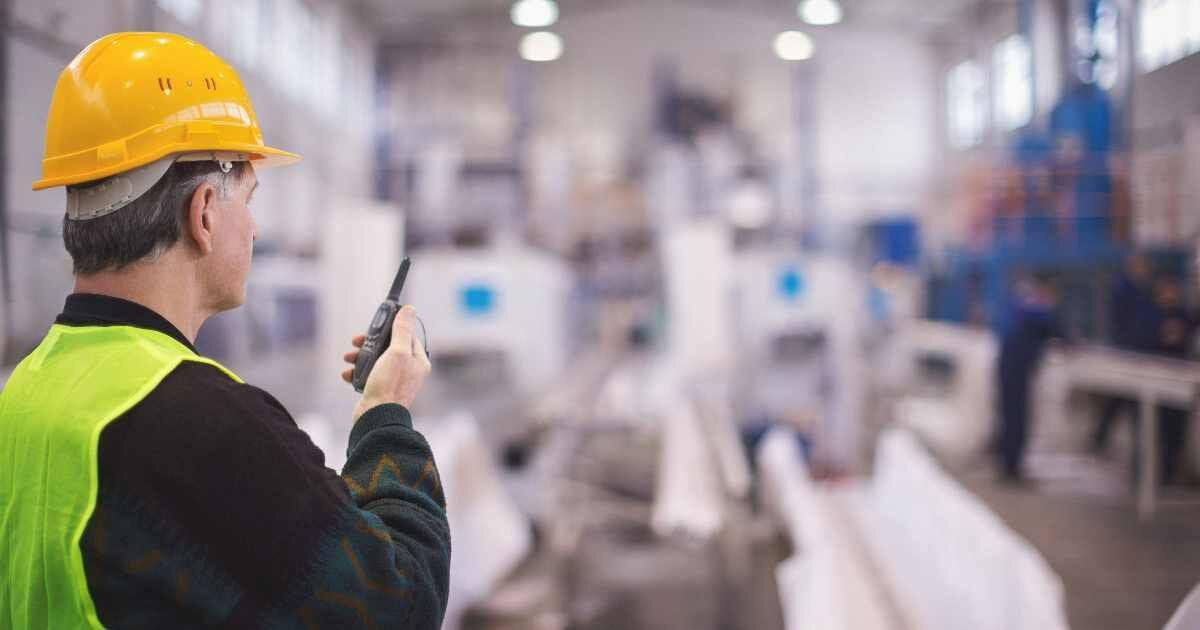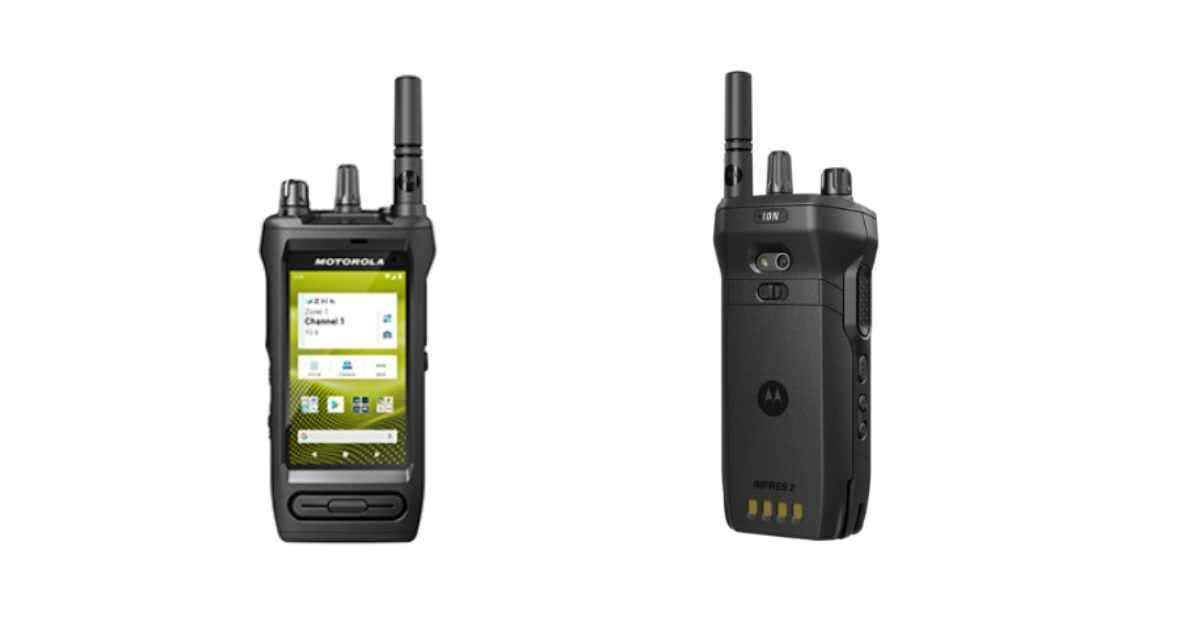
Two-way radios have been the backbone of factory communication since they first appeared on production floors. These sturdy devices, originally resembling heavy-duty walkie-talkies, revolutionized the way factories operated. Before radios, supervisors had to walk across massive factory floors to deliver instructions or summon help. Quality control and maintenance were slow and inefficient. Radios changed this, enabling instant communication, keeping production on track, and improving safety during emergencies.
The Early Days of Two-Way Radios
Back in those early days, two-way radios might have been pretty basic compared to what we have now, but they changed everything. Built tough enough to survive daily factory life, they solved a huge problem – how to talk over all those noisy machines.
Picture a factory supervisor in the 1980s. With a radio in hand, they could instantly tell the maintenance team about a broken machine or alert quality control about a problem. No more running around looking for people or wasting time when something went wrong. But these early radios weren't perfect – sometimes, the signal would cut out right in the middle of an important message, or static would make voices hard to understand. Plus, batteries had an annoying habit of dying during crucial moments.
Even with these problems, these radios made a huge difference in how factories ran. They proved something important: when people can communicate clearly, work gets done better and faster.
The Communication Challenges of Modern Factories
Step into a modern factory, and you'll see why those old radios just won't cut it anymore. Today's manufacturing brings some serious communication challenges:
- Noise Overload: Modern factories are louder than ever, with high-tech machines, robots, and automated systems running at once.
- Space Issues: Factories now span multiple buildings and huge outdoor storage areas, where old-style radio signals often fail.
- Safety Priorities: Delayed messages during emergencies aren't just inconvenient – they could put lives at risk.
- Smart Factory Systems: Factories packed with sensors and automated systems need communication tools that integrate seamlessly to avoid inefficiencies.
- Team Communication: Maintenance crews, QC teams, and safety teams have different needs that one basic system can't address.
Modern Challenges for Communication Tools
While early radios solved many problems, modern factories present new challenges. Noise from high-tech machinery, sprawling spaces, and advanced safety needs require better solutions. Workers need tools that integrate with smart factory systems and handle diverse team requirements, such as maintenance crews and safety teams.
Innovations in Two-Way Radios

Today’s radios, like the MOTOTRBO Ion and R7, offer advanced features like noise cancellation, extended range, and integration with digital systems. These radios also support Bluetooth connectivity, enabling seamless pairing with headsets and other devices for hands-free communication, and text messaging capabilities for sharing updates when voice communication isn’t practical.
Their rugged designs withstand factory environments, and GPS tracking ensures quick responses in emergencies. Emergency buttons and smart integrations streamline communication, allowing teams to collaborate effectively across locations.
Benefits for Manufacturing
Modern radios improve efficiency by enabling faster problem resolution and reducing costly delays. Their advanced safety features protect workers, while their durability ensures long-term reliability. Factories that invest in these tools see improved productivity, enhanced safety, and smoother operations.
Upgrading to advanced radios isn’t just an equipment change – it’s a step toward smarter, safer, and more efficient manufacturing.
Key Innovations in Modern Two-Way Radios
New advances in radio technology have made it much easier for workers to talk with each other in factories and warehouses. These improvements are helping teams work better and stay safer on the job than ever before. Let's look at what makes these new radios so much better than the old ones.
Better Sound Quality
The new radios can block out background noise so that workers can hear each other clearly, even in loud places. The sound is so clear that it's like talking face-to-face without any distractions. When repair teams work near noisy machines, they can understand every word their teammates say, which helps them fix problems faster and avoid mistakes. Factory workers don't have to shout or repeat themselves anymore, making their jobs easier and safer.
Improved Coverage
These digital radios can send messages much farther than older models could. Workers can talk to each other across big buildings or even between different locations without the signal cutting out or getting fuzzy. A shipping manager can easily talk with workers in several warehouses to make sure deliveries arrive on time and in the right place. This better coverage means fewer delays and mix-ups when moving products around.
Super Tough
The new radios are made to handle tough conditions in factories and warehouses. They keep working even if they get wet, dusty, or dropped on hard floors. This means workers don't have to worry about breaking their radios while doing their jobs. The tough design saves money because the radios don't need to be replaced as often, and workers can focus on their work instead of being careful with their equipment.
Smart Integration
New models like the MOTOTRBO Ion connect easily with other factory systems and can share information right away. Quality teams can check if products meet standards and quickly tell factory workers if something needs to be fixed.
These radios can also connect to computers and tablets, making it easier to share important information about orders, schedules, and safety updates. This helps everyone stay on the same page and work together better.
Advanced Safety Features
Modern radios now include GPS tracking and emergency buttons to help protect workers. The GPS shows exactly where each worker is, which is especially important during emergencies like fires or accidents. Safety teams can quickly find and help anyone in trouble.
The emergency button is a simple but powerful feature – workers just press one button to call for help. This quick action can save lives when seconds count. Managers can also use GPS tracking to make sure workers stay in safe areas and follow safety rules. When someone needs help, teams know exactly where to go, helping them respond faster to any emergency.
These radios do more than just keep track of locations – they also record how often different features are used. This information helps companies understand how their teams work and where they might need more training. It also helps them create better emergency plans based on real workplace patterns.
Better Tools for Modern Factories
Today's two-way radios have come a long way from simple voice communication devices. They help solve many workplace challenges while making work safer and more efficient. When factories choose advanced radios, They're investing in tools that help their operations run smoothly and adapt to changing industry needs.
Benefits of Modern Two-Way Radios in Manufacturing
New radio technology helps factories work better by improving how workers talk to each other and fix problems. When machines break down, repair teams use these radios to work together more effectively, often fixing things twice as fast. This quick communication keeps the factory running and stops expensive delays that could slow everything down.
Better Safety Tools
Today's radios come with important safety features like GPS tracking and emergency buttons. These tools help managers know where their workers are and make sure everyone stays safe. If someone needs help, the safety team can find them quickly. The tracking also keeps workers out of dangerous areas and helps everyone follow safety rules.
Saving Money Over Time
While these better radios cost more to buy at first, they save money by helping workers make fewer mistakes and keep things running smoothly. When people can hear each other clearly, they don't waste time fixing errors or dealing with slowdowns. This better communication helps factories avoid costly problems that happen when messages get mixed up.
Works for Companies of Any Size
These radio systems help both small factories and big companies with many locations. Businesses can start small and add more radios as they grow bigger. Workers can talk to each other across different buildings or even different cities, making it perfect for growing companies.
Made for Tough Factory
Work unlike regular phones or simple walkie-talkies, these radios are built specially for industrial work. They keep working even after being dropped, getting dusty, or used around loud machines. Workers can count on them throughout their whole shift, which is really important in busy factory conditions.
Choosing the Right Two-Way Radio
When selecting a two-way radio for your manufacturing needs, consider these factors:
- Durability: Look for radios that can handle industrial wear and tear.
- Range: Ensure the device provides reliable communication across your entire facility.
- Features: Evaluate the importance of GPS tracking, noise cancellation, and integration capabilities for your operations.
- Cost: Balance the upfront investment with long-term savings from improved efficiency and safety.
Devices like the MOTOTRBO Ion and R7 are excellent options, offering advanced features and unmatched reliability for industrial use. By choosing the right device, companies can transform their communication systems and enhance overall operations.
Conclusion
The evolution of factory radios shows how far technology has come. What began as simple walkie-talkies has transformed into advanced communication tools. Today's radios filter out noise, track worker locations, integrate with smart systems, and keep teams working smoothly – each one a powerful control center on your belt.
The value lies in what better communication does for factories: keeping production lines moving, solving problems faster, enhancing safety, and improving collaboration. Upgrading to modern radios isn’t just an equipment change; it equips your factory to thrive in today’s competitive world.
Contact us today to find the right communication system for your teams. Staying connected isn’t just important – it’s essential for modern manufacturing success.

